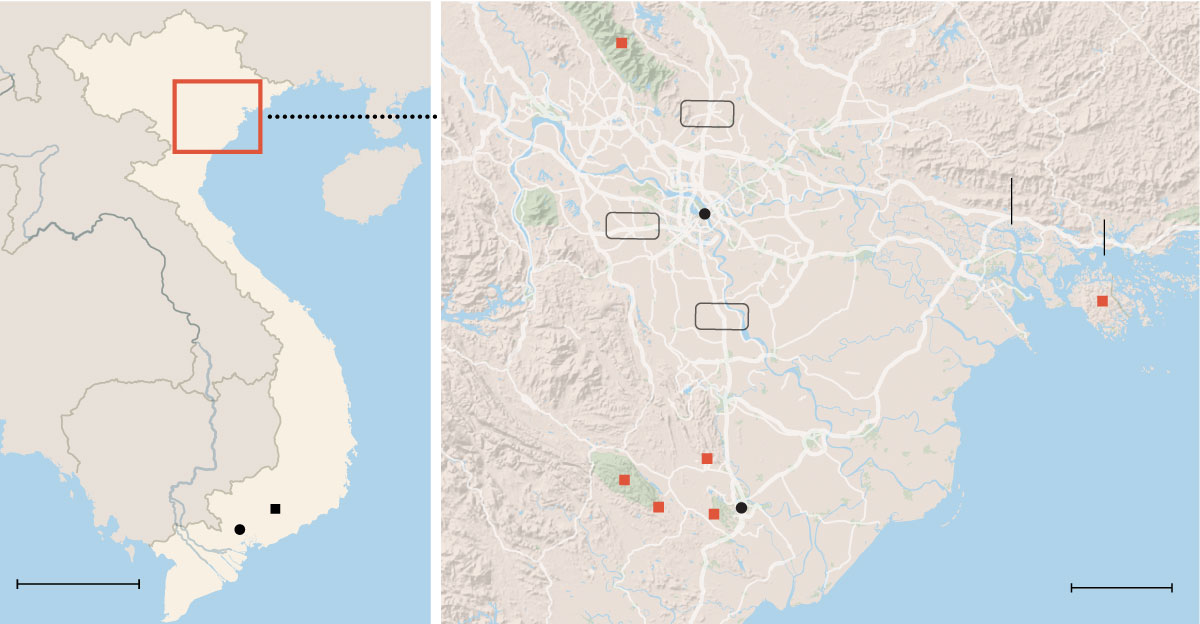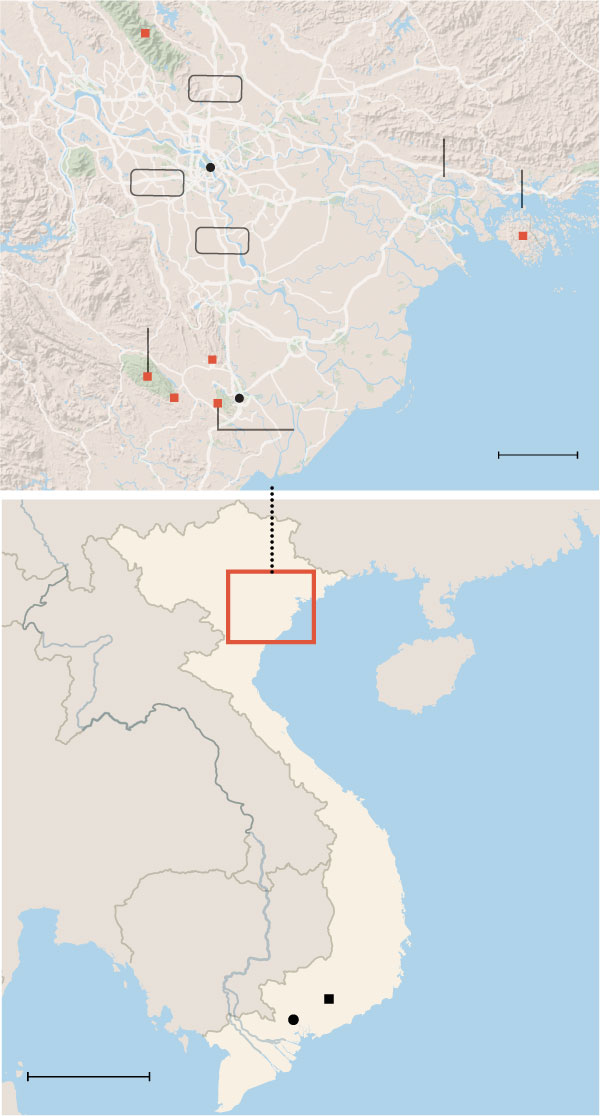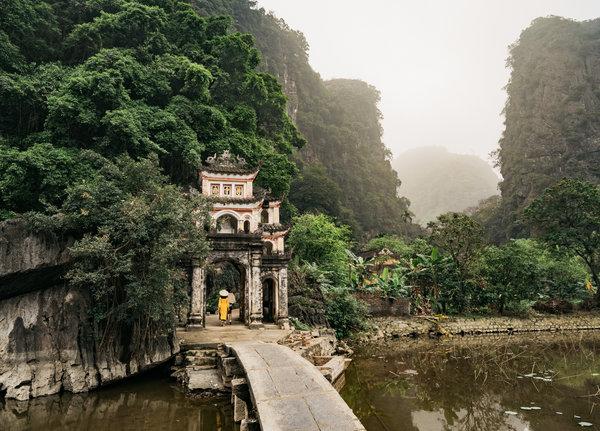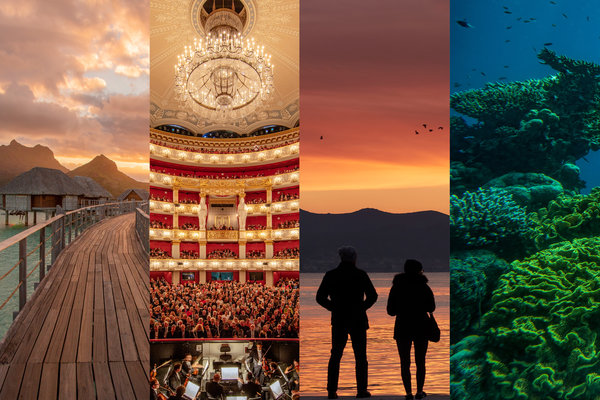Despite long and tragic wars with the Japanese, the French, the Chinese and the United States during the last century, Vietnam is a treasure house. It is one of the world’s hot spots of biological diversity, according to the science research. There are 30 national parks in a country a bit larger than New Mexico, and about as many kinds of animals as in those pre-eminent safari destinations, Kenya and Tanzania.
In fact, hundreds of new-to-science species of plants and animals have been discovered in Vietnam during the last three decades, and more are recorded each year. The antelope-like saola, for example. Its gentle, streaked face looks as if it has just escaped from a jungle-dream painting by Henri Rousseau. Heralded as “the last unicorn” for its rarity, the saola is the largest land-dwelling animal discovered anywhere since 1937. A small herd of long-lost rhinos, a barking deer and a striped rabbit have also turned up. So has a giant, 21-inch-long walking-stick insect, and many kinds of birds — laughing thrushes! — fish, snakes and frogs hitherto unknown or thought to be extinct.
Vietnam’s forests shelter two dozen species of primates — gibbons, macaques, lorises and langurs, often in colors that make the human tribe look banal by contrast.
A promotional email I received from Cuc Phuong National Park was tantalizing: “The ancient forest contains almost 2,000 species of trees and among them live some amazing and rare animals including the clouded leopard, Delacour’s langur, Owston’s civet, otters and Asian black bears! … owls, flying squirrels, lorises, bats and cats.”
But in trying to make arrangements to visit, the travel fixers my wife and I contacted were oddly hesitant about natural areas and wildlife, and they kept nudging us back toward mere scenery, or to cities. And then this email: “Have you been to Vietnam before, or know of the situation there? It’s pretty dire if you are not aware.”
Dire for wildlife?
“Very much so. In Vietnam, national parks are primarily in name only, and poaching (often practiced by park rangers) and worse has decimated wildlife.”
Calls to conservation personnel who live and work in Vietnam reconciled the seeming contradictions. Yes, the country is an epicenter for wild species diversity. No, wildlife travel is not much pursued, and Vietnam has also become a world center for criminal wildlife trafficking.
Its wild populations, already hemmed in by habitat destruction because of an exploding human population, are also being shot, snared and live-captured so efficiently that national parks and other natural areas are now mostly afflicted with “empty forest syndrome”: suitable forest habitat from which even small animals and birds have been hunted into local extinction. Other Asian countries are in various stages of the same convulsion. It’s frequently said that many new species vanish before science can even discover them.
Vietnam’s decline is especially intense. For example, in a single remote national preserve set aside for the saola and other rare animals, 23,000 cheap but fatally efficient wire snares were found in 2015, the most recent year tallied. Tens of thousands more of these snares are placed each year, as fast as they can be confiscated. Despite intensive surveys, no verifiable sighting of a saola has occurred since a photo was taken of one, six years ago. The last rhino was shot by poachers in the Cat Tien National Park in 2010. Tigers have been effectively hunted out of existence. Only tiny populations of bears and elephants hang on in small, vulnerable pockets. Nearly all of the many primate species are at risk of extinction.

Tam Dao National Park
Bach Dang R.
Ha Long Bay
South
China Sea
Cat Ba National Park
Van Long
Wetland Nature Reserve
Cuc Phuong
National Park
South
China Sea
Cat Tien
National
Park
Endangered Primate
Rescue Center
Thung Nham
Bird Park
Ho Chi Minh City

Tam Dao National Park
Bach Dang R.
Ha Long Bay
Cat Ba National Park
Cuc Phuong
National Park
Van Long Wetland
Nature Reserve
South
China Sea
Endangered
Primate
Rescue Center
Thung Nham
Bird Park
South
China Sea
Cat Tien
National Park
Ho Chi Minh City
Some of this carnage supplies national appetites for Eastern traditional medicine in Vietnam and neighboring China. Examples from a lengthy catalog of purported remedies include: tiger penises for impotence, bear bile for cancer, rhino horn for a hangover, loris bile to ease the serious airway infections that arise from Vietnam’s air pollution.
Even more of the motivation, surveys have found, “is to supply the rampant demand for wildlife meat in urban restaurants, which is very much a status issue,” said Barney Long, director of species conservation for the nonprofit group Global Wildlife Conservation.
“This is not bush meat where poor people are hunting for food,” he said. “It’s a status symbol to take your business or government colleagues out for a wildlife meal. And honestly it’s on a scale that is mind boggling. We’re talking not about one or two species, but whole communities of wildlife disappearing.”
After further scouting, my wife and I decided to go anyway, arranging to fly into Hanoi, in the north, and move quickly to Vietnam’s green outback. Then we would head south to Ho Chi Minh City, the former Saigon, for a circuit of the parks and natural areas there.
Over the course of our two-week trip, we found that some exquisite wild species hold out, though in threatened circumstances. And we were fortunate, if half-willing, witnesses to the struggle by native Vietnamese, and their international conservation allies, to halt what amounts to animal genocide.
Cuc Phuong, the nation’s first national park, is a couple of hours south of Hanoi. It was created in 1962 by Ho Chi Minh, who prophesied that “the current destruction of our forests will lead to serious effects on climate, productivity and life. The forest is gold. If we know how to conserve and manage it well, it will be very valuable.”
But despite the blandishments in that government-issued invitation to the park we’d received, there are no more Delacour’s langurs in these forests, nor any other kind. No bears, leopards or smaller cats either, unless they are so well hidden that even scientists cannot find them, Adam Davies, director of the Endangered Primate Rescue Center, told me.
Instead, the richest collection of rare animals can be found along a quiet narrow park road lined by animal rescue centers that amounts to a kind of conservation superhighway. At the Primate Rescue Center, visitors can see four species of nearly extinct langurs (also called leaf-eating monkeys), gibbons and lorises, many of which were rescued from wildlife traffickers. They are doctored back to health, bred when possible, and in especially fortunate circumstances, are returned to the wild. Poachers make the rest of this national park too hostile a landscape to risk releasing most kinds of animals, Mr. Davies said.

The Bich Dong Pagoda in Tam Coc. The surrounding area is rich in birdlife, but development is a threat.CreditDavid Rama Terrazas Morales for The New York Times
A few steps away are two other rescue centers. One protects dozens of species of turtles, many of striking beauty, all of them endangered. The other is for confiscated leopard cats, civets, the binturong or bearcat — which has been compared to a dust-mop that smells like fresh popcorn — and the pangolin, an armadillo-like animal whose meat and scales can command $500 a pound on the menus or in the folk-cure apothecaries of Hanoi and Ho Chi Minh City. “Pangolin is currently the world’s most trafficked mammal, which is a very unwanted title,” Mr. Davies said.
His center reintroduced some critically endangered Delacour’s langurs to the wild in the Van Long Wetland Nature Reserve, about 90 minutes down the road. There we boarded a small rowboat at a landing, plied by one of a cluster of local guides, for a half-day float within a protected gorge.
We veered off, along a route no one else in the pack of boats had taken. The langurs, now breeding successfully somewhere out there, stayed hidden. That’s the nature of such quests, of course: Enjoy the pretty sojourn, even if your quarry eludes you. Maybe all those other little boats had gone in a better direction?
Then heading back we heard shouts from a farmer, off in the brush. He was pointing excitedly at some shaking trees on the opposite shore. A rowdy group of 10 langurs ultimately emerged — this species is black with what look like mutton-chop side whiskers and white pants — and we spent most of a transfixed hour watching them groom and chase and bask in the intense subtropical sun. With luck, they’ll continue to be protected here and not become fodder for the meat or pet trades.
To see bears, we drove to Tam Dao National Park, high on a long ridge north of Hanoi. A resort town within the park bristles with construction cranes and heavy backhoes, part of the national building boom.
In the valley below is a bear sanctuary operated by Animals Asia and sometimes open to visitors. We watched two species — moon bears and the smaller sun bears — romp, swim and climb within a specially constructed recreation habitat. Both look like wild-haired, punk-rock versions of North American black bears and have vivid white chevron collars. They have arrived here from bear bile farms where they live in cruelly close confinement, as their bile is repeatedly extracted until they expire.
The practice is now illegal, though loopholes make the law difficult to enforce, said Tuan Bendixsen, the director of the center. “Bear bile extraction is still going on,” he said. “You can still buy it down in Hanoi if you want to.”
Many of the bears he gets “are missing limbs, or are damaged in other ways,” he said, which makes their chances for return to the wild slender. And suitable wild land for such releases is increasingly rare, he said, as the human population and the national economy grow.
The corruption that afflicts Vietnam’s one-party government, along with the growing economy, are major factors in the disappearance of natural habitat and endangered species. Corruption was given as a major reason for weak protections and slack enforcement by the conservation groups we spoke with.

“There are issues with corruption in all segments of Vietnamese society, and forest protection is no different,” said Andrew Tilker, an American field researcher who tracks the saola and other rare species.
Some courageous officials push back, and both homegrown and international conservation groups can cite successes. But the consensus view is that the wider prospect for Vietnam’s wild species is quickly deteriorating. The country’s government has earned a corruption ranking from the group Transparency International that could be charitably summarized as “dismal.”
We witnessed that clash of aspirations during a stay near Ninh Binh, a couple of hours south of Hanoi. There we had found the loveliest lodging of our trip — and the competition was keen — at a place called Tam Coc Gardens. It’s a few stone bungalows hidden within a lush landscape, ringed by colossal limestone rock formations and plateaus we had only seen in watercolor paintings. We had picked the place because it is a half-hour bike ride from the Thung Nham Bird Park.
We rolled into the park one late afternoon and wondered if we had somehow lost the way. Though touted as an “ecological” destination, the park has been taken over by a tourism corporation with big plans. We walked past broad lawns and wide lakes fringed with forest, all heavily manicured and completely bereft of bird life. On the near shore, jackhammers, chain saws and grinding trucks battered the air in the ambitious expansion of a lakeside resort — not well calculated for maintaining bird habitat.
At length, we located a boat shed and found a woman with a traditional conical hat and a big oar. For a small fee she rowed us and three other passengers out onto the barren-looking lake and toward a wall of bamboo. Stow the binoculars. No birds to see, or hear. Maybe it was just the weather.
Ten minutes in, we began to hear what sounded like an agitated conversation among members of the world’s biggest book group, somewhere out of view. Then our boat glided into a rookery with hundreds of herons and storks, each one as big as a 2-year-old child, perched, preening or at times filling the sky overhead. It was a delight, but its future may depend on that construction project, and whether the solemn, barren-seeming lakes next door are symptomatic of how this landscape will be managed.
Vietnam is not alone in failing to protect its wild species, of course. In the United States, many of our own “protected” animals are being pushed nearer the edge. Initiatives from the Trump administration have rolled back the designation of some national monuments and would weaken the Endangered Species Act.

If there’s hope for Vietnam’s natural heritage, we learned, some of it resides with creative, sometimes courageous conservation groups like Education for Nature-Vietnam. They push research, criminal investigations, political fights and legal maneuvers forward. Those bring risk.
Another source of hope for Vietnam lies in engaging local communities in wildlife protection with economic incentives. The World Wildlife Fund, for example, sponsors sustainable rattan and acacia farming as buffer zones for beleaguered natural preserves along the western border with Laos. In other places, environmental groups pay local people a living wage to patrol the rain forest and collect those thousands of deadly snares.
Tourism, growing quickly in Vietnam, can also sustain wild areas, though only if it is carefully managed. International tourism arrivals neared 15.5 million in 2018 — a startling 64 percent jump above the 2016 figure, which explains the forest of construction cranes we saw ringing the shoreline at the far end of Halong Bay, as high-rise hotels surge into Cat Ba National Park’s environs. They, in turn, explain the habitat fragmentation and near-extinction of the Cat Ba langur and other species that used to inhabit this landscape. About 60 of the animals remain in isolated populations, where feeding and breeding options are nearly foreclosed. In the 1960s, there were some 3,000.
We headed south toward Ho Chi Minh City and from there I took a solo trip, riding three or four hours north to spend a couple of days in Cat Tien National Park. On a sweltering afternoon, a dapper young park ranger led a couple of us on a two-hour “wildlife trek.” This time we really were in a silent forest.
The only thing we encountered were squadrons of dry-ground leeches. They found us very quickly: Blood blossoms appeared on my socks as I stooped to pick the creatures off my ankles. (The ranger was wearing high boots.)
The Dao Tien Endangered Primate Species Centre, on an island a few minutes downriver, can show visitors several species, including gloriously exuberant gibbons that careen through the high tree canopy. At times they commence a sudden, nearly deafening concert. It sounds like a symphony of demented slide-whistles, sirens and the world’s loudest theremins. Gibbon song betrays the locations of these, our kindred species, to hunters in the national park across the river. They are sometimes shot out of the trees over there, and sold to be eaten in the cities.
Park rangers and others I spoke with at Cat Tien affirmed that its animal populations are declining; that some rangers have been caught colluding with hunters to bring down high-value animals (though they are said to be severely dealt with), and that the rangers earn something like $200 a month to start, which makes this a less-lucrative career option — and poaching an attractive one.
I stayed at the edge of the park in the well-appointed Cat Tien Jungle Lodge. Its proprietors, Duong Thi Ngoc Phuong and Gary Leong, work to help protect Cat Tien from mass tourism and to build economic ties with impoverished local communities to dissuade them from poaching. “Without the animals, there is little reason for the park’s existence,” Mr. Leong said. “We have to give everyone a stake in protecting them.”
That means, at least in part, creating economic incentives for local people to preserve native species in their natural habitats. And it needs to start soon, wildlife advocates say.
“Every day we all wake up and say, ‘do we have time? Do any of these species have time? Are we just fighting a war that we’ve already lost?’” said Quyen Vu, the executive director of Education for Nature-Vietnam. “But if we don’t fight, then we definitely have lost.”
Stephen Nash is the author of “Grand Canyon for Sale — Public Lands versus Private Interests in the Era of Climate Change.”






